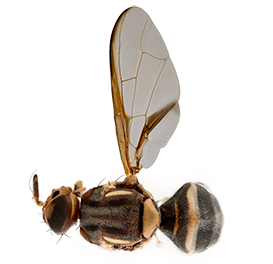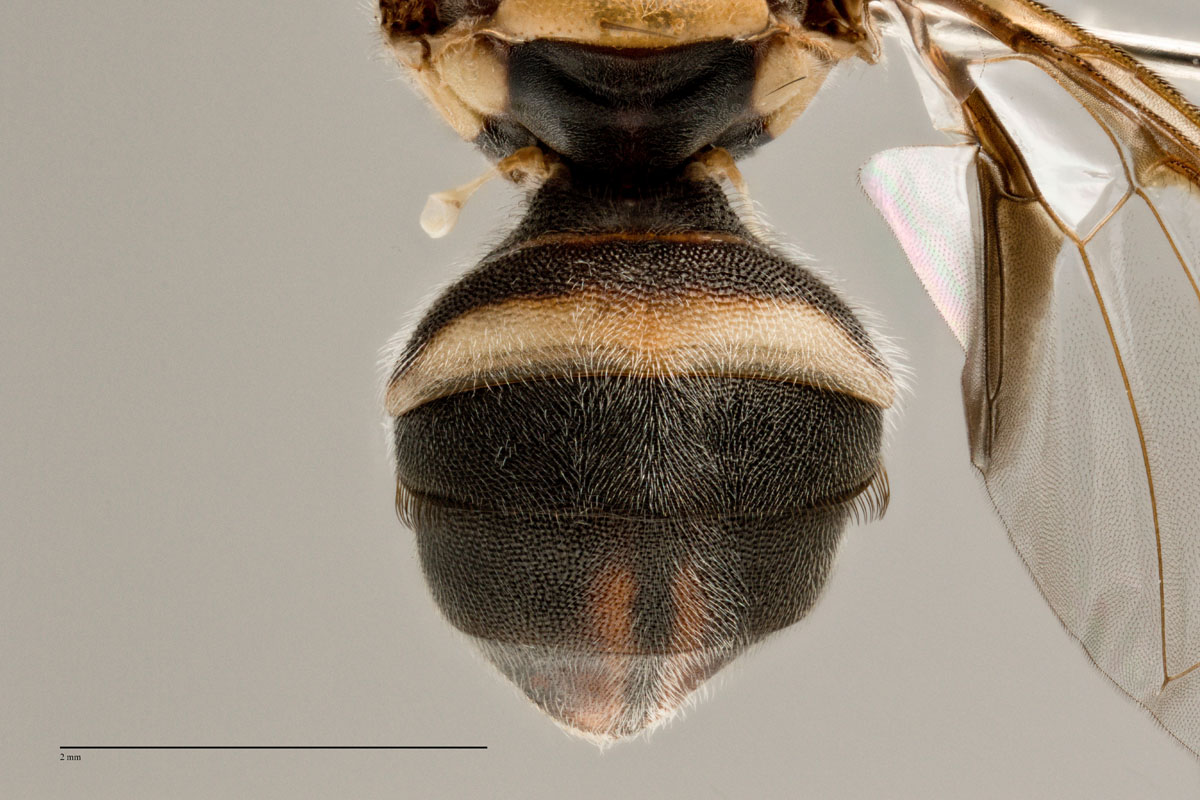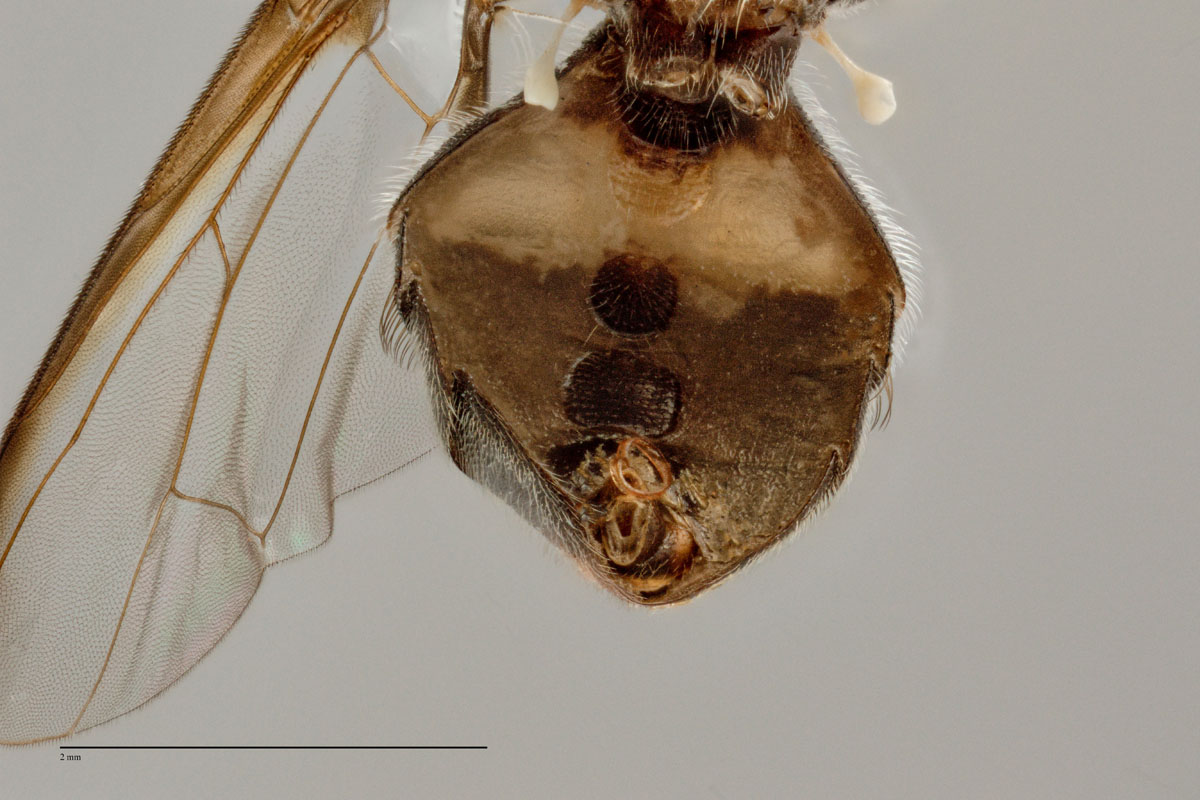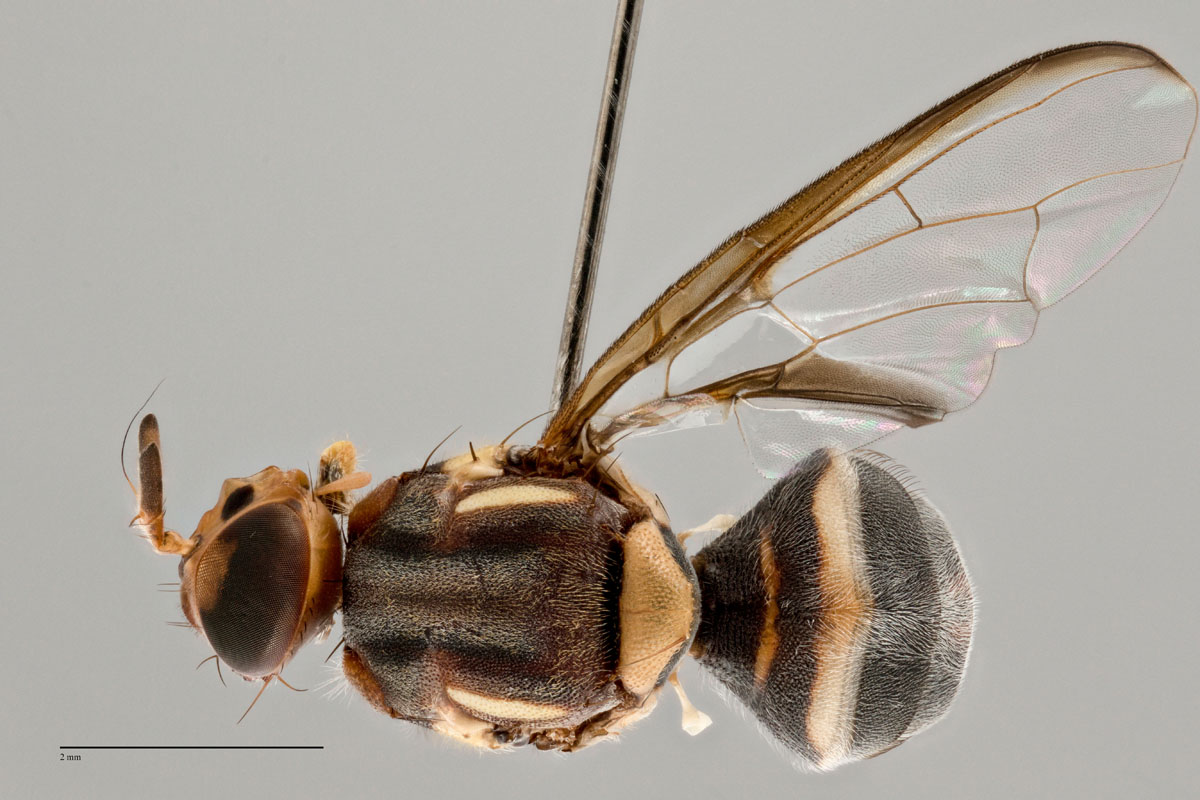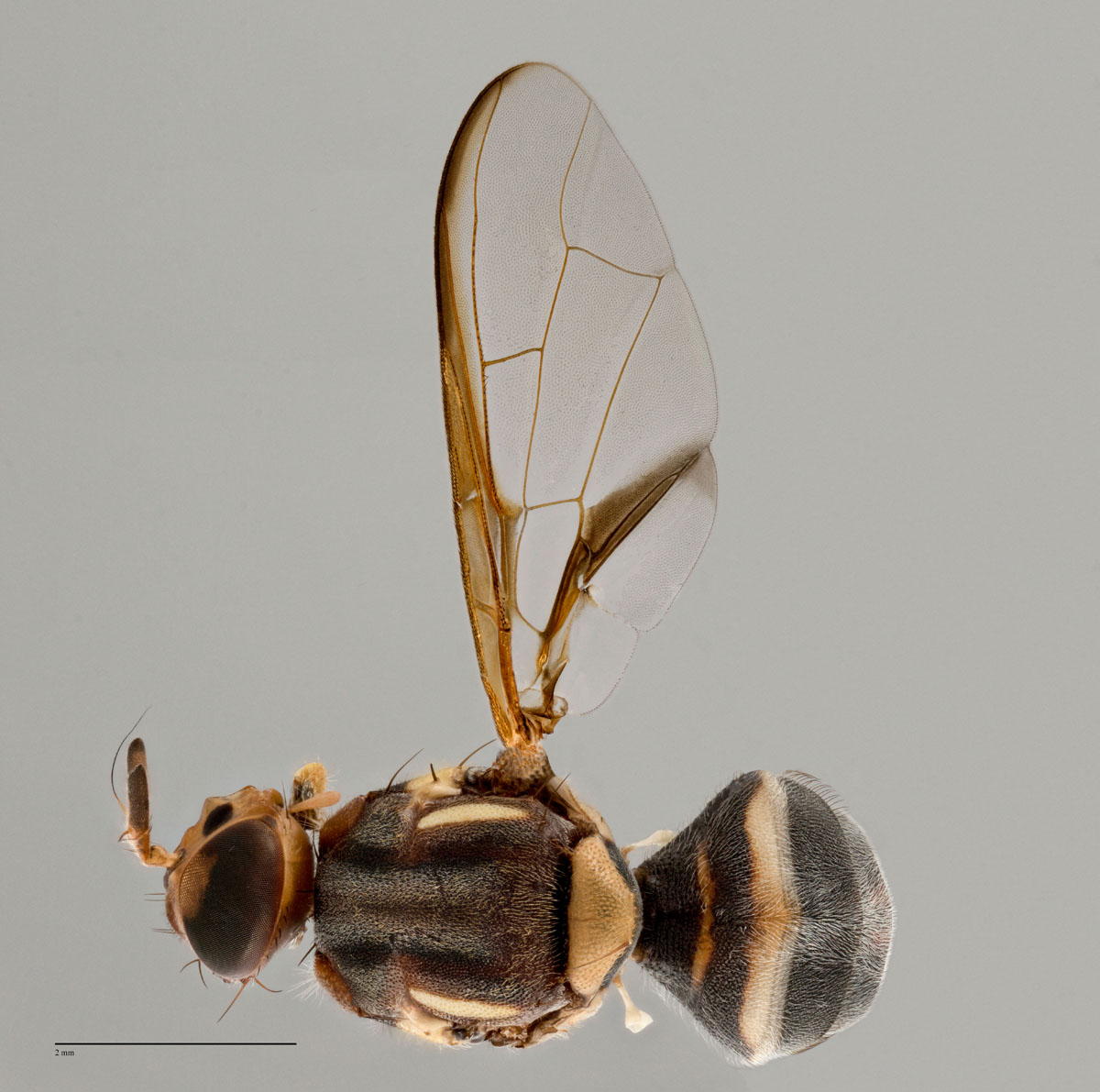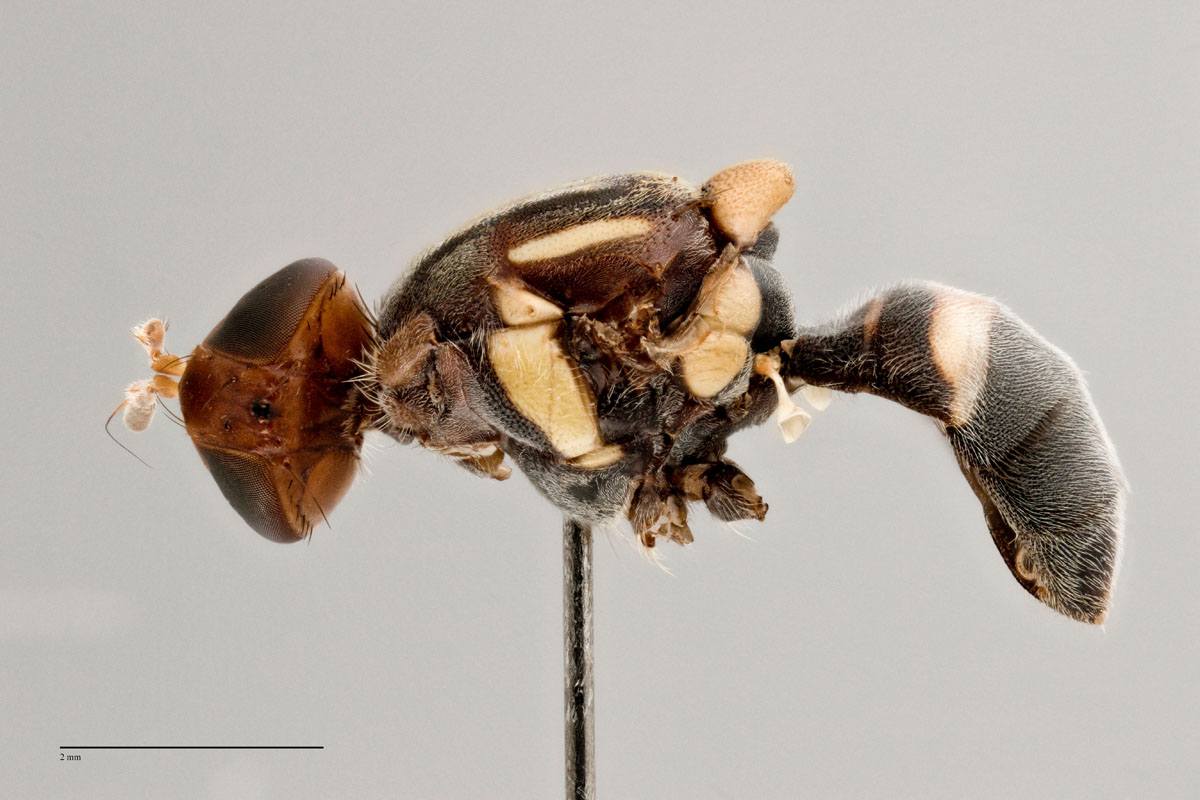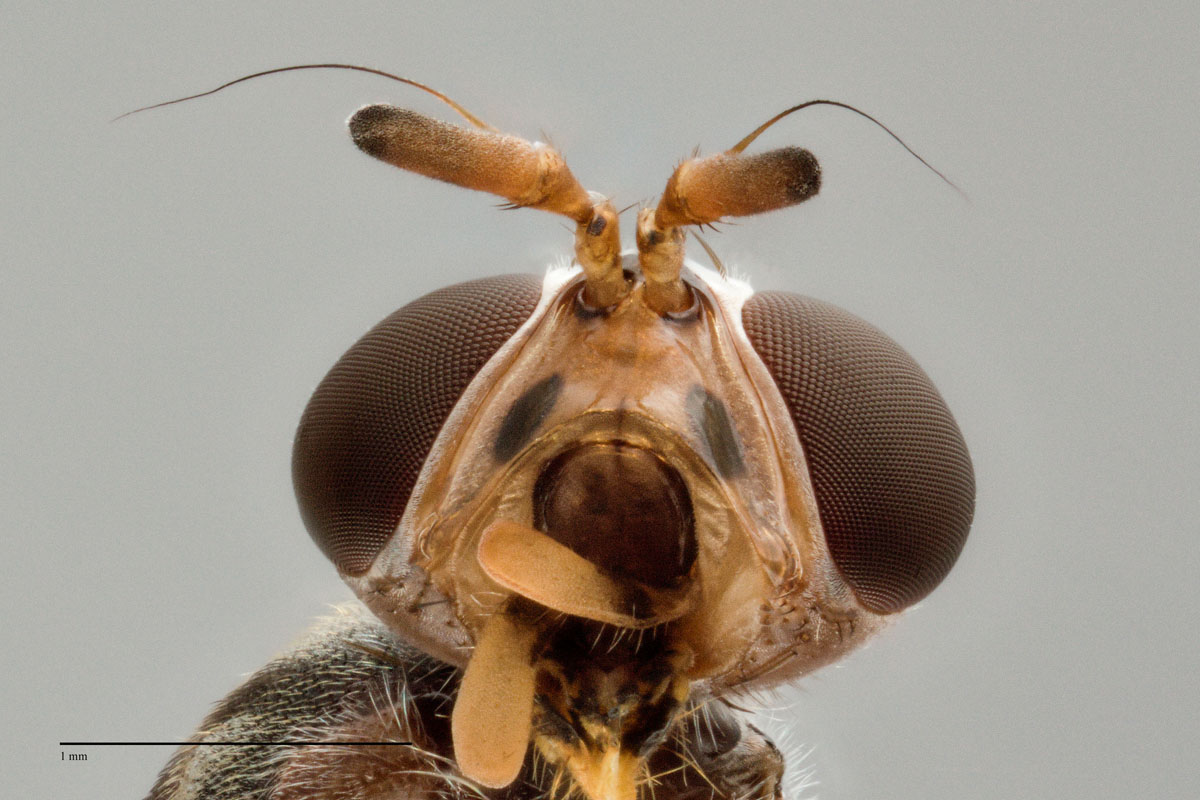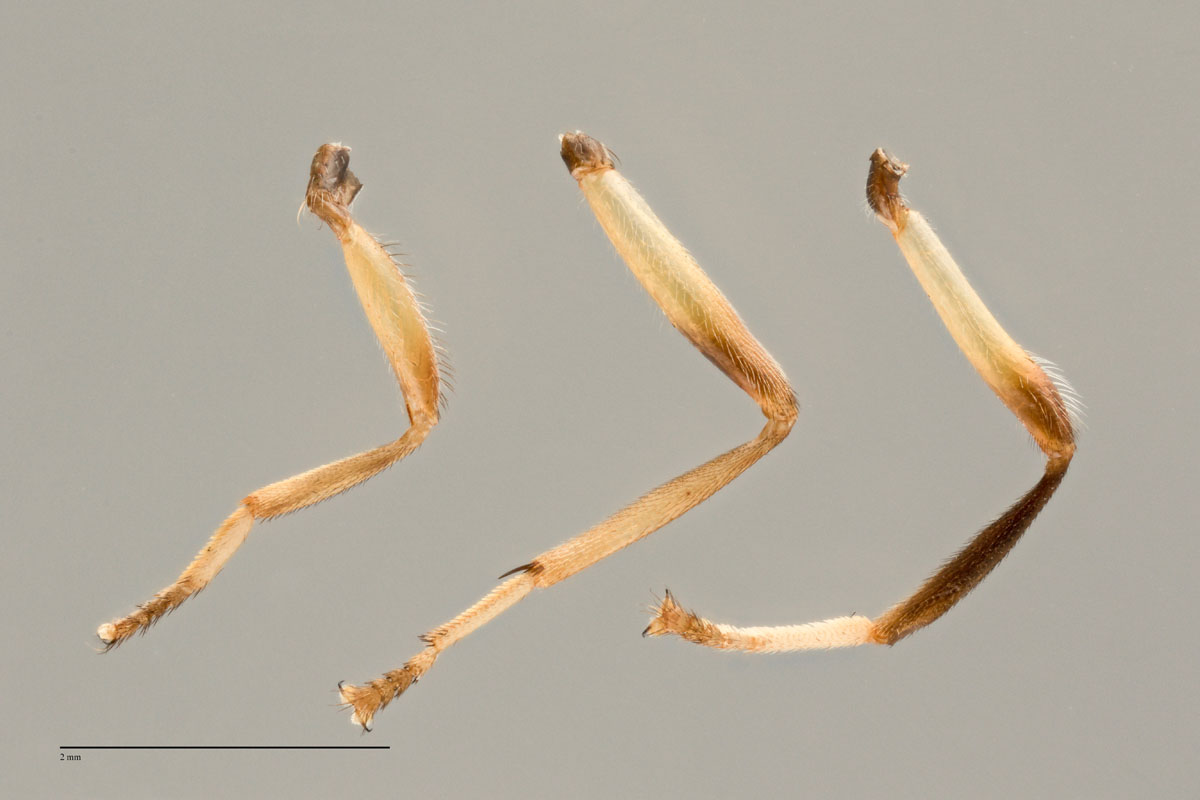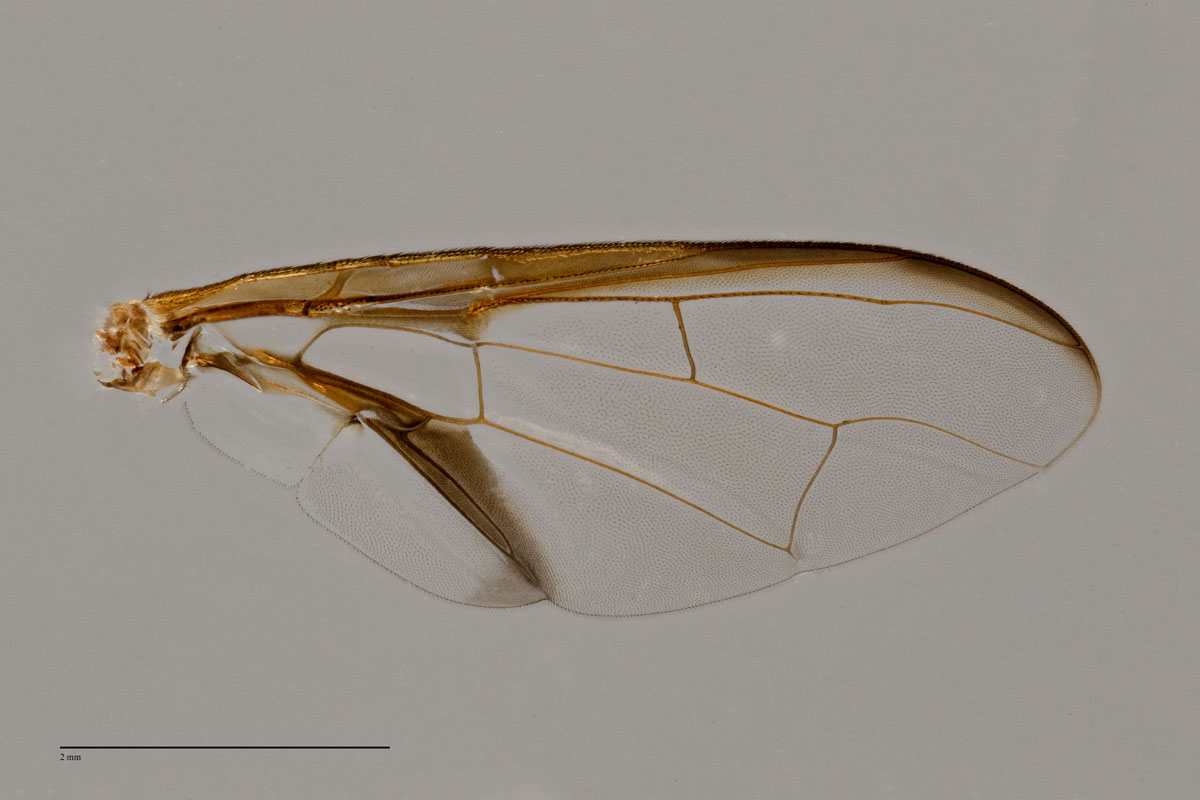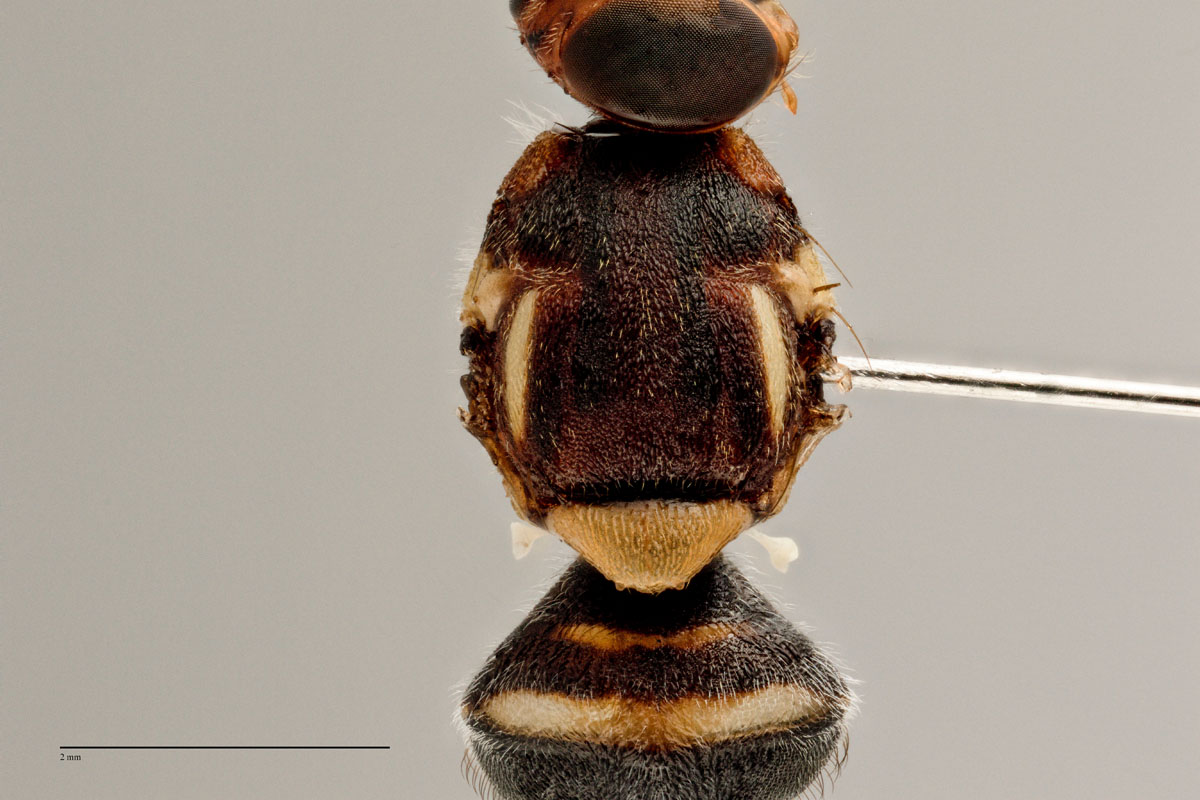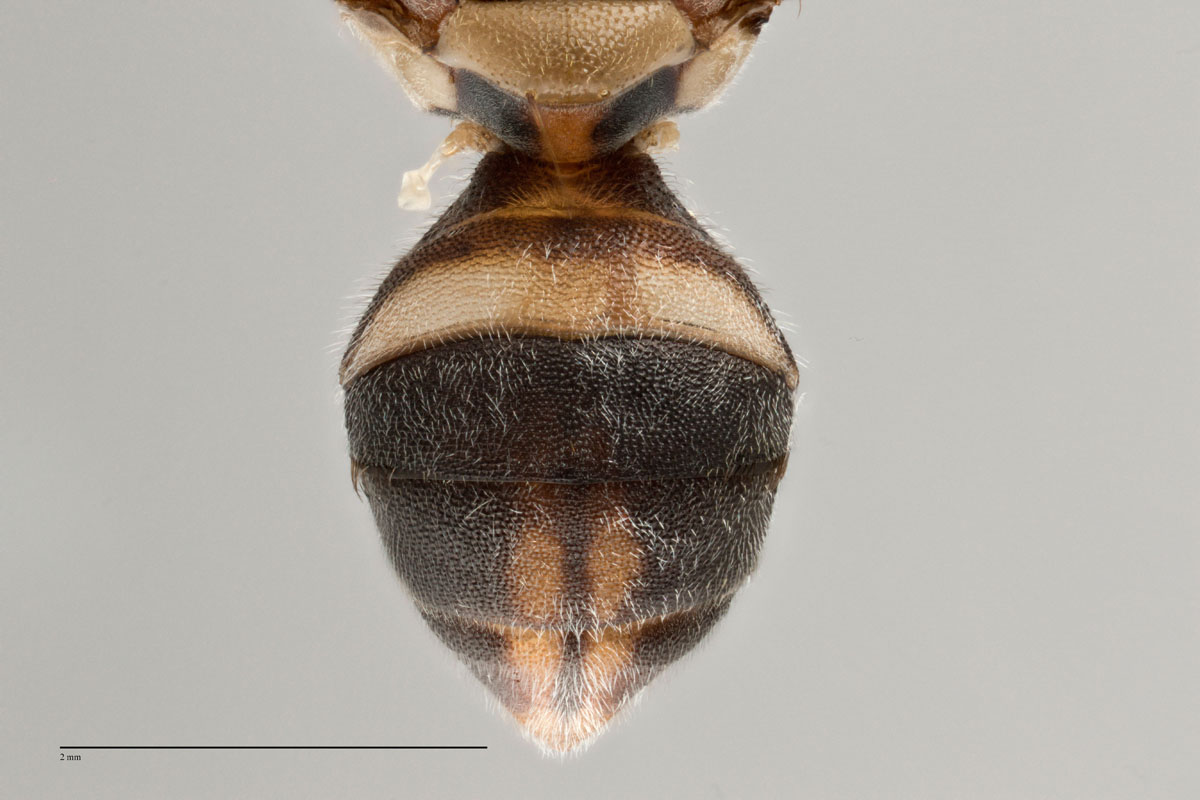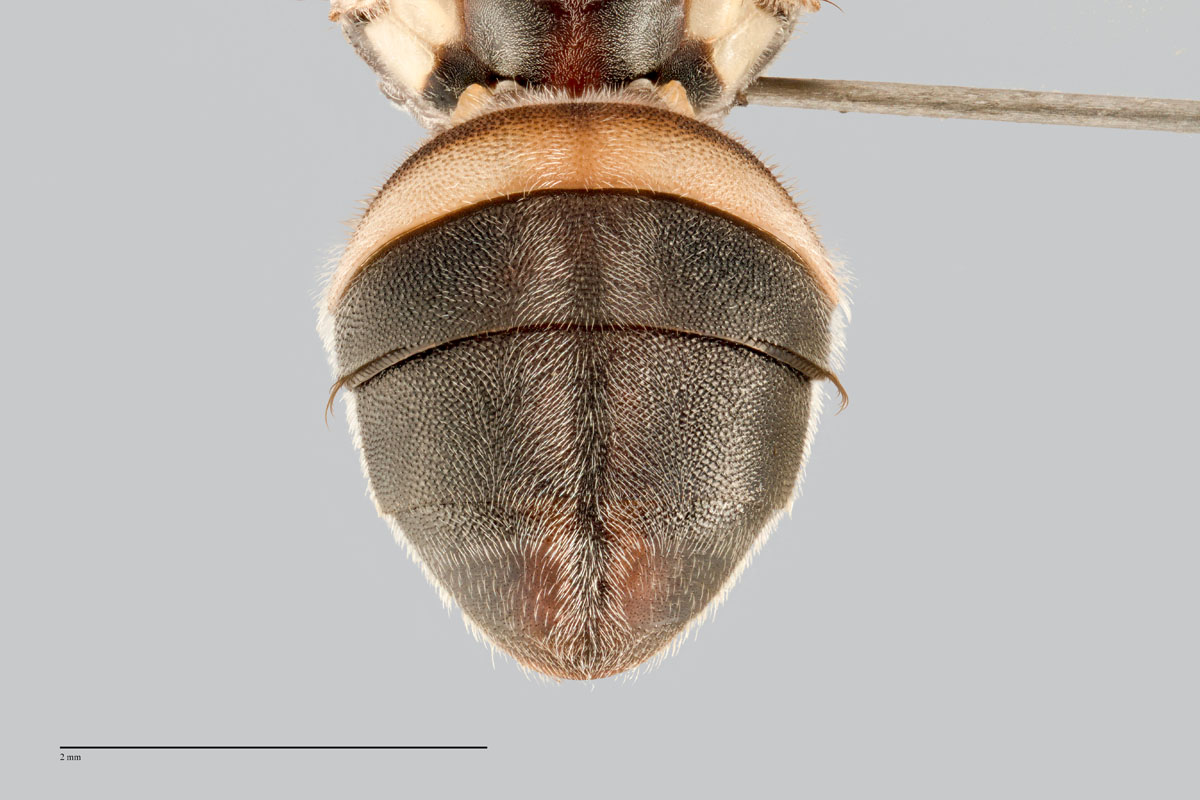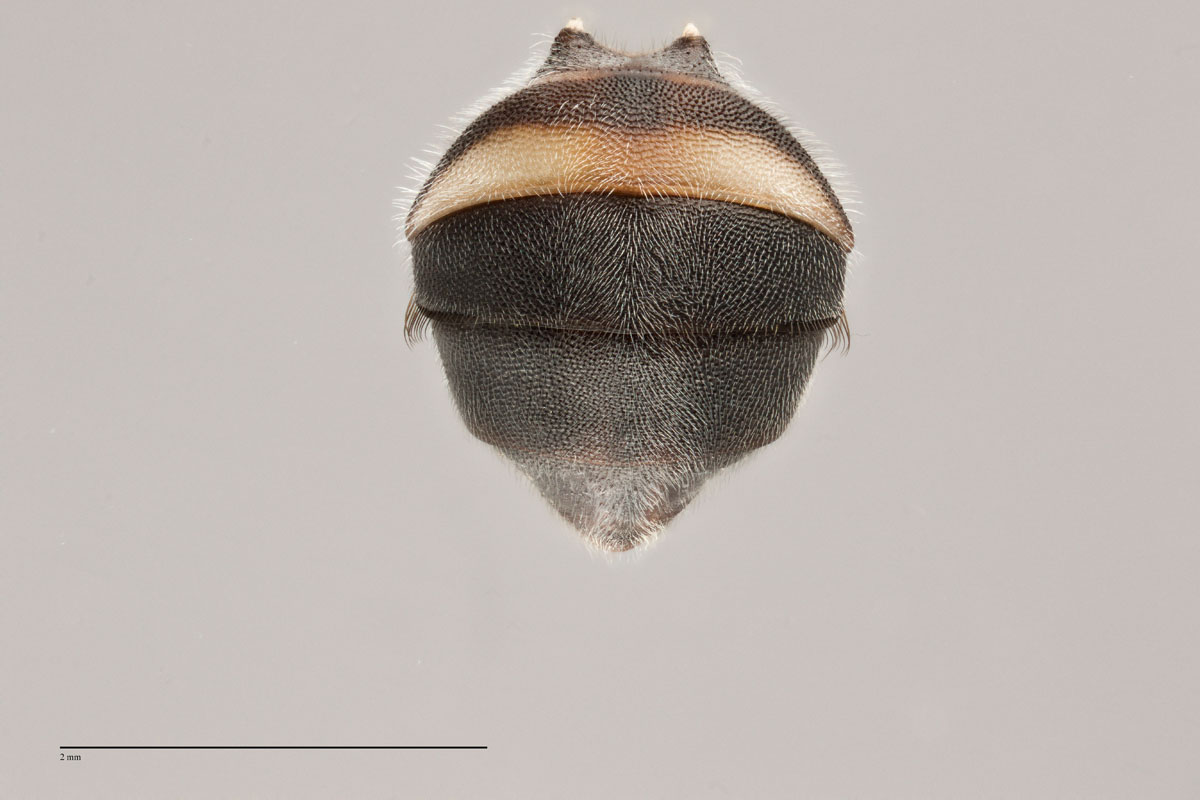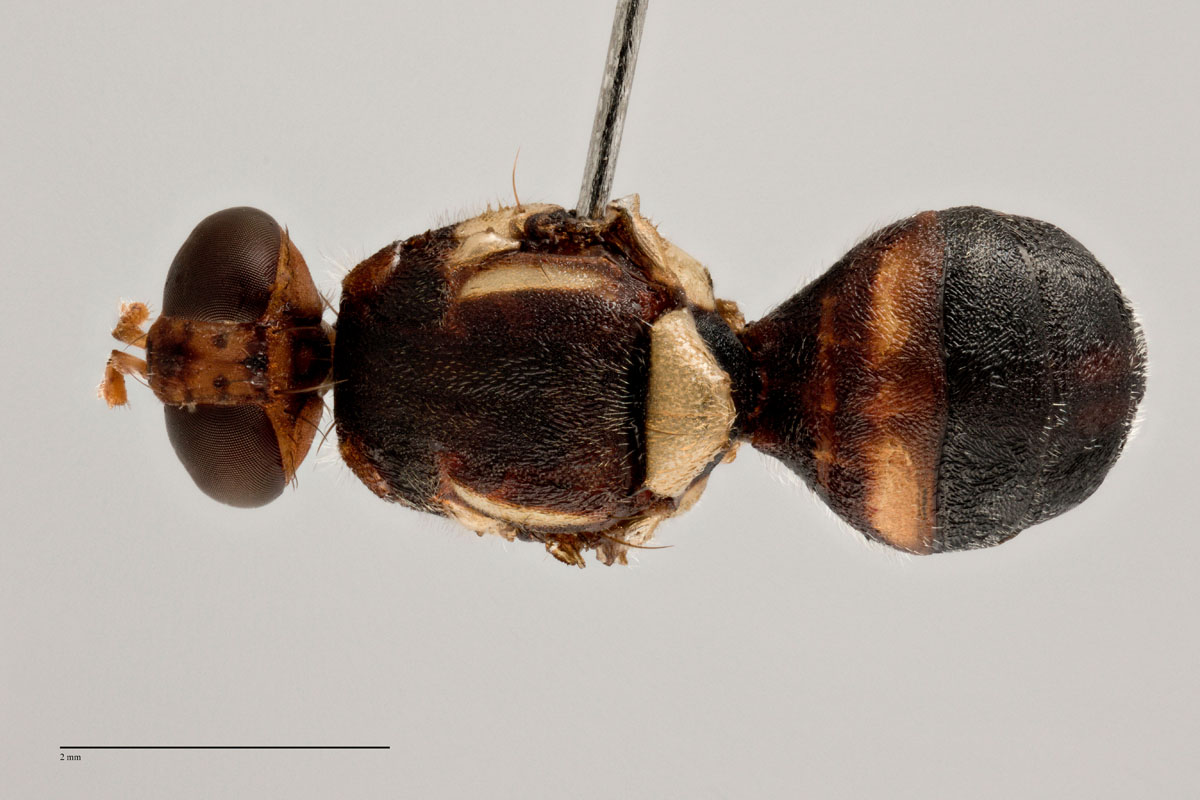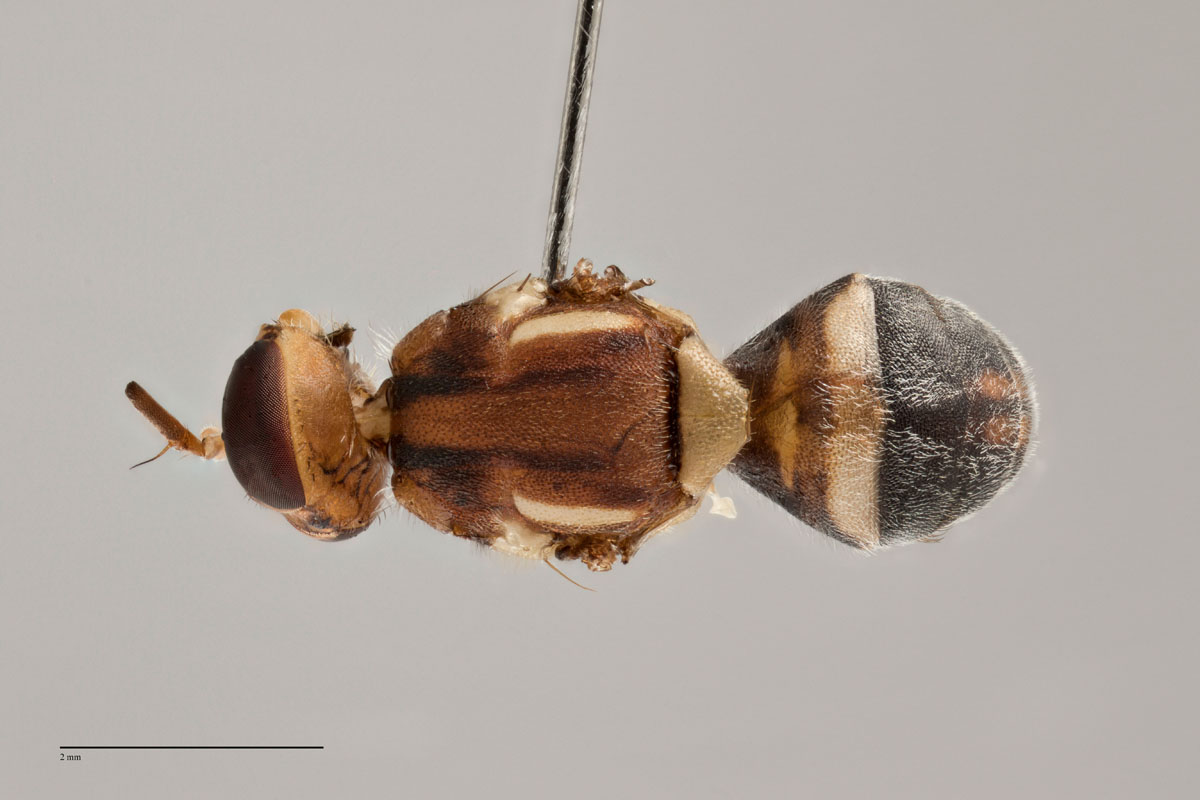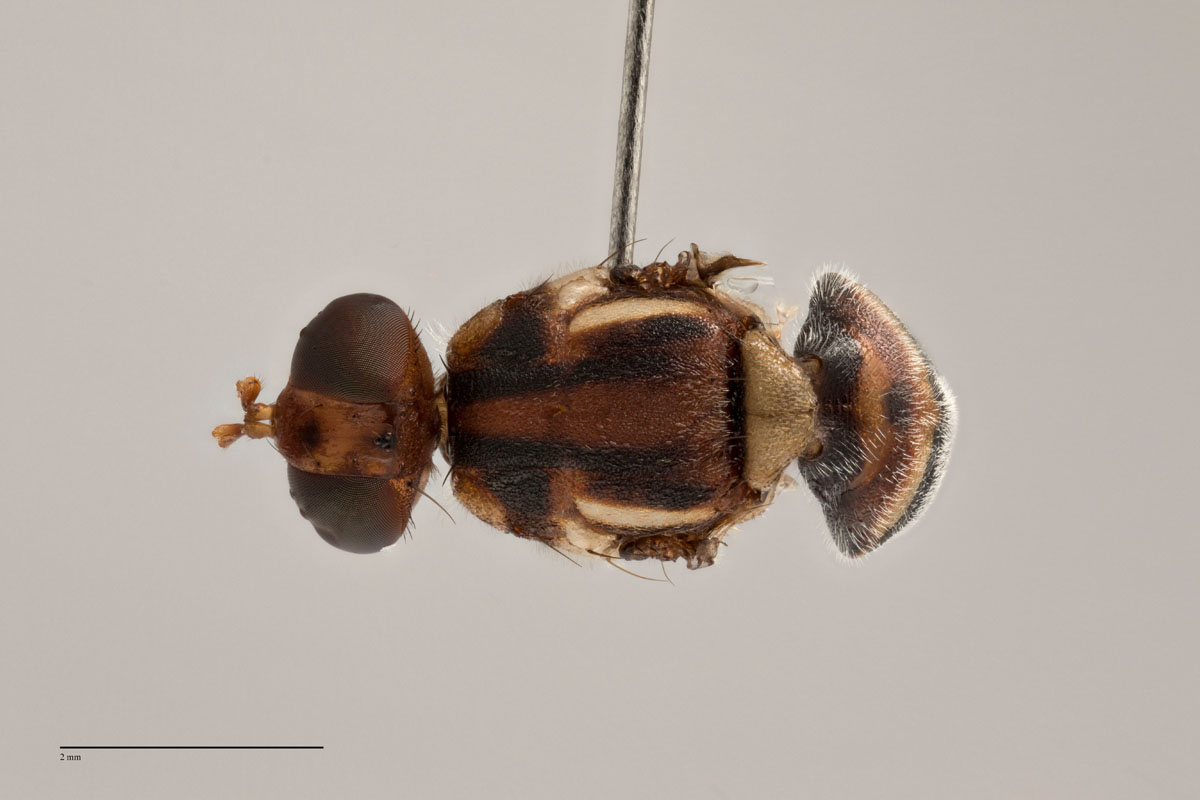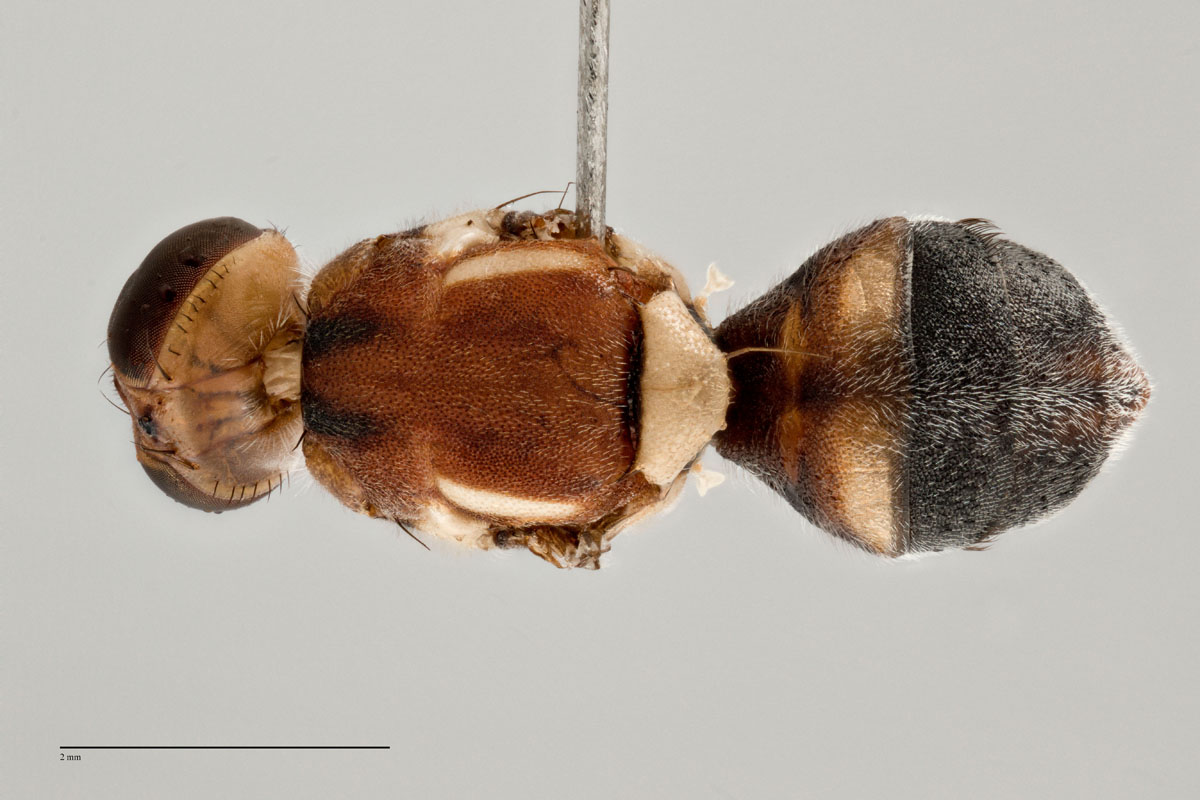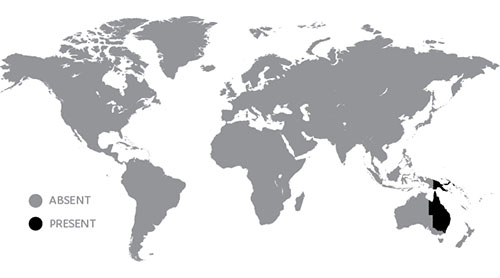Diagnosis
Morphological – adult
Features include:
- medium sized species
- medium sized black facial spots present
- postpronotal lobes dark brown to fuscous
- notopleura yellow
- scutum dark red-brown with dark fuscous to black markings, mesopleural stripe reaching midway between anterior margin of notopleuron and anterior npl. seta, lateral postsutural vittae present, medial postsutural vitta absent, scutellum yellow
- wing with a narrow fuscous costal band and broad fuscous anal streak, cells bc and c fuscous, microtrichia covering cell c and outer ½ of cell bc
- abdominal terga III-V generally dark fuscous to dull black and tending red-brown medially; posterior lobe of male surstylus short; female with aculeus tip needle shaped (Drew 1989; pers. comm. Drew 2010).
Morphological – larvae
See White and Elson-Harris 1992 p. 220.
Molecular
DNA barcoding
BOLD reference data available, but cannot be distinguished from B. aquilonis or B. tryoni.
EIF3L data
B. neohumeralis BRV005 Abdomen variation EIF3L
B. neohumeralis NEO006 Scutum variation EIF3L
B. neohumeralis NEO007 Scutum variation EIF3L
B. neohumeralis NEO008 Scutum variation EIF3L
B. neohumeralis NEO012 Classic specimen EIF3L
FCOI data
B. neohumeralis BRV005 Abdomen variation FCOI
B. neohumeralis NEO005 Classic specimen FCOI
B. neohumeralis NEO006 Scutum variation FCOI
B. neohumeralis NEO007 Scutum variation FCOI
B. neohumeralis NEO008 Scutum variation FCOI
B. neohumeralis NEO009 Scutum variation FCOI
PCR-RFLP Test 1
BsrI: 200, 600
HinfI: 770
HhaI: 640, 190
Sau3AI: 420
SnaBI: Does not cut
SspI: 180, 570
Vspl: Does not cut
Approximate ITS1 fragment length – gel: 820 bp.
PCR-RFLP Test 2
SspI produces a B. tryoni species complex diagnostic restriction pattern.
SspI: 1000, 550 and 100.
This species cannot be distinguished from B. aquilonis or B. tryoni. Other restriction patterns useful for diagnosis of the complex are listed in Restriction enzyme haplotype chart, with choice based on relative distinctiveness from other species potentially trapped; descriptions of the patterns are given in Diagnostic restriction patterns.
